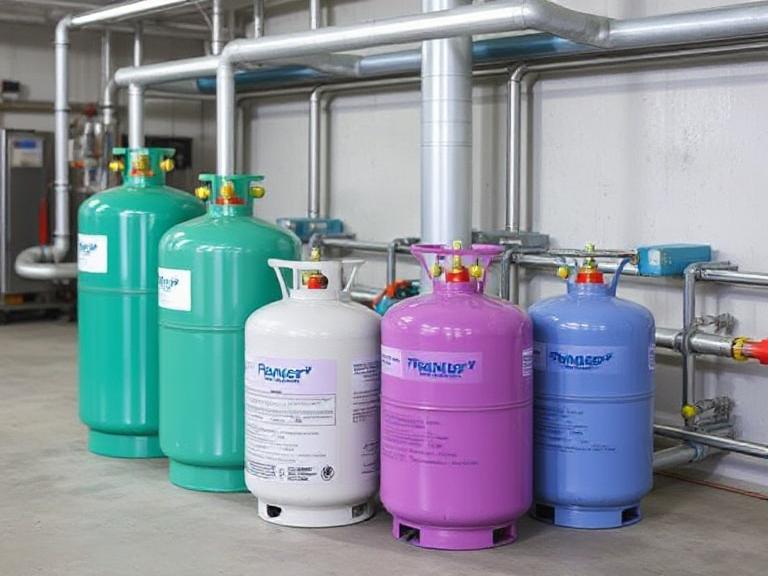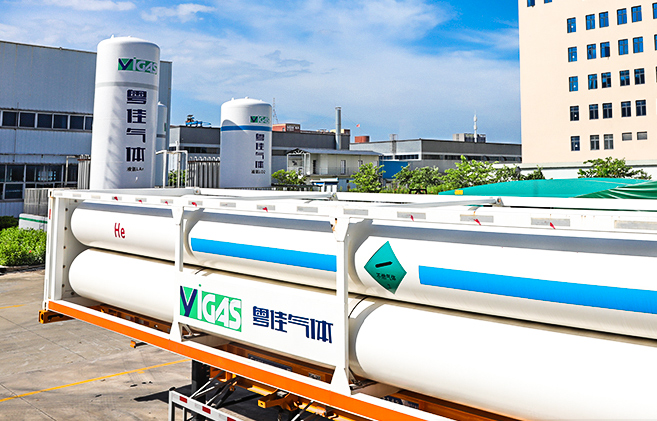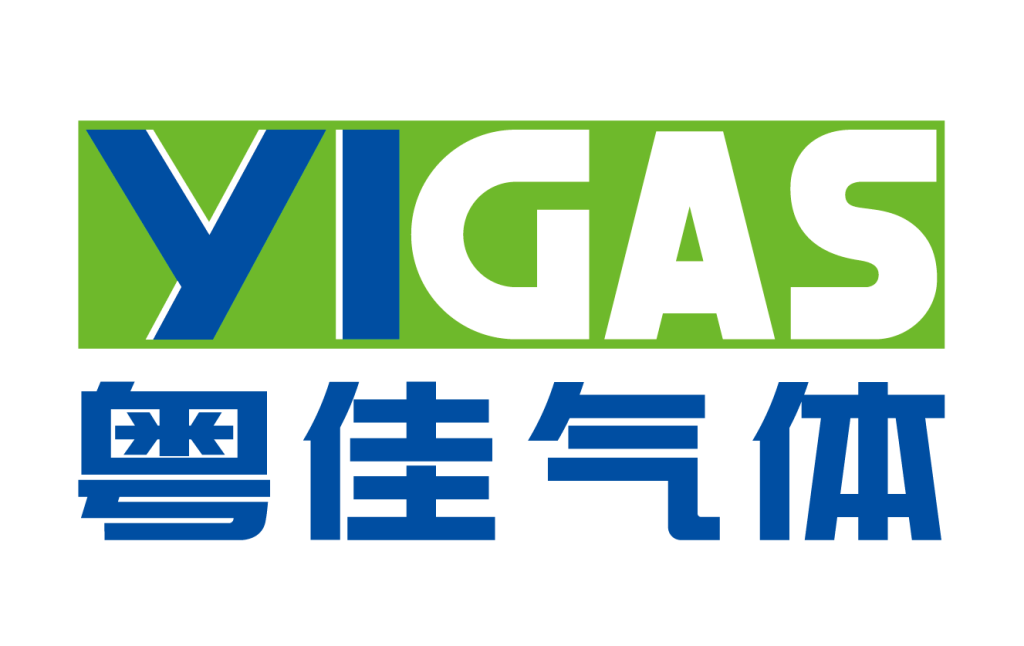Table of Contents
- Introduction to Refrigerants
- 1. Synthetic Refrigerants
- 2. Natural Refrigerants
- 3. Zeotropic & Azeotropic Blends (e.g. R‑410A, R‑454B)
- 4. Environmental Regulations & Phase‑Downs
- 5. YIGAS GROUP: Industrial Gas Supplier
- 6. How to Choose the Right Refrigerant
- Conclusion
- Summary Table
Introduction to Refrigerants

Refrigerants are the heart of cooling systems—absorbing and releasing heat in refrigerators, air conditioners, and industrial chillers. As technology evolves, the industry increasingly transitions toward eco-friendly options. Today, refrigerants fall into four main categories: synthetic fluorinated gases, natural substances, engineered blends, and cutting-edge low‑GWP alternatives.
1. Synthetic Refrigerants
Synthetic refrigerants dominate HVAC systems but often carry high GWP and environmental concerns.
1.1 CFCs (Chlorofluorocarbons)
- Includes R‑12, R‑11 — extremely stable but caused ozone depletion.
- ODP & GWP: Very high (e.g., R‑12 GWP ~10,900) .
- Phased out globally under the Montreal Protocol in the 1990s .
1.2 HCFCs (Hydrochlorofluorocarbons)
- Transitional refrigerants like R‑22 replaced CFCs.
- Medium ODP and GWP (R‑22 GWP ~1,810) .
- Phased out by 2020 due to ozone and climate impact
1.3 HFCs (Hydrofluorocarbons)
- Common modern replacements: R‑134a, R‑410A, R‑407C.
- Zero ODP but high GWP: R‑410A ~2,088; R‑134a ~1,430 .
- Phase‑down under Kigali Amendment—with limited quotas to 2036 .
1.4 HFOs (Hydrofluoroolefins)
- 4th gen: R‑1234yf, R‑1234ze — featured low GWP (~1 or less) .
- Classified A2L: mildly flammable and low-toxicity.
- Gaining adoption as HFC replacements in automotive and residential AC.
2. Natural Refrigerants
Known for excellent thermodynamic properties and zero ODP/GWP.
2.1 Ammonia (R‑717)
- Classic industrial refrigerant since 1876 .
- Zero ODP and GWP, highly efficient but toxic Class B1.
- Ideal for large cold-storage systems with safety protocols.
2.2 Carbon dioxide (R‑744)
- Used in sub‑/trans‑critical systems.
- Zero GWP, non-toxic, Class A1 .
- Requires high pressure—specialized equipment essential.
2.3 Hydrocarbons (R‑290, R‑600a, R‑1270)
- Propane, isobutane, propylene — low GWP (between 3 and 10) .
- Highly efficient but flammable (Class A3) .
- Used in small commercial refrigerators and heat pumps.
3. Zeotropic & Azeotropic Blends
- R‑410A: mix of R-32/R-125—High GWP, being phased out.
- R‑454B: lower-GWP HFC/HFO blend (~466 GWP), Class A2L .
- Other blends listed in the R‑400 series with mixed boiling points .
4. Environmental Regulations & Phase‑Downs
- Montreal Protocol: Banned CFCs and HCFCs, protect ozone layer.
- Kigali Amendment: Mandates 85% HFC phase-down by 2036.
- AIM Act (USA): Reduces HFCs by 85% from 2022–2036 .
- Illegal HFC smuggling undermines progress—cases reported in US and EU .
5. YIGAS GROUP: Industrial Gas Supplier

YIGAS GROUP, established in 1993 and headquartered in China’s Pearl River Delta, specializes in industrial gases like nitrogen monoxide, silane, sulfur hexafluoride—though not traditional refrigerants, their ISO9001/OHSMS certifications underscore their reliability in gas supply .
6. How to Choose the Right Refrigerant
- Environmental impact: Lower GWP/zero ODP is key.
- System design: Pressure and flammability influence equipment compatibility.
- Regulatory compliance: Avoid phased-out chemicals like R‑22/R‑410A.
- Safety considerations: Toxicity and flammability require proper handling.
- Availability and cost: Some low‑GWP blends face shortages (e.g., R‑454B)
Conclusion
Refrigerant technology is evolving rapidly in 2025. Natural refrigerants and low‑GWP HFOs are replacing outdated CFCs/HFCs to meet global climate goals while ensuring safety and performance. Understanding refrigerant types, regulations, and system needs ensures optimal environmental and operational outcomes.
Summary Table
| Type | Examples | ODP/GWP | Class | Best Use |
|---|---|---|---|---|
| CFCs | R‑12, R‑11 | High ODP, GWP | A1 | Obsolete, banned |
| HCFCs | R‑22, R‑123 | Medium ODP/GWP | A1/B1 | Phasing out |
| HFCs | R‑134a, R‑410A | 0/1,400–2,100 | A1/A2L | Legacy systems |
| HFOs | R‑1234yf, R‑1234ze | 0/≈1 | A2L | Low-GWP replacements |
| Ammonia | R‑717 | 0/0 | B1 | Industrial cooling |
| CO₂ | R‑744 | 0/0 | A1 | Commercial/industrial |
| Hydrocarbons | R‑290, R‑600a | 0/3–10 | A3 | Small refrigeration |
| Blends | R‑410A, R‑454B | 0/466–2,100 | A2L/A1 | Residential/commercial |

